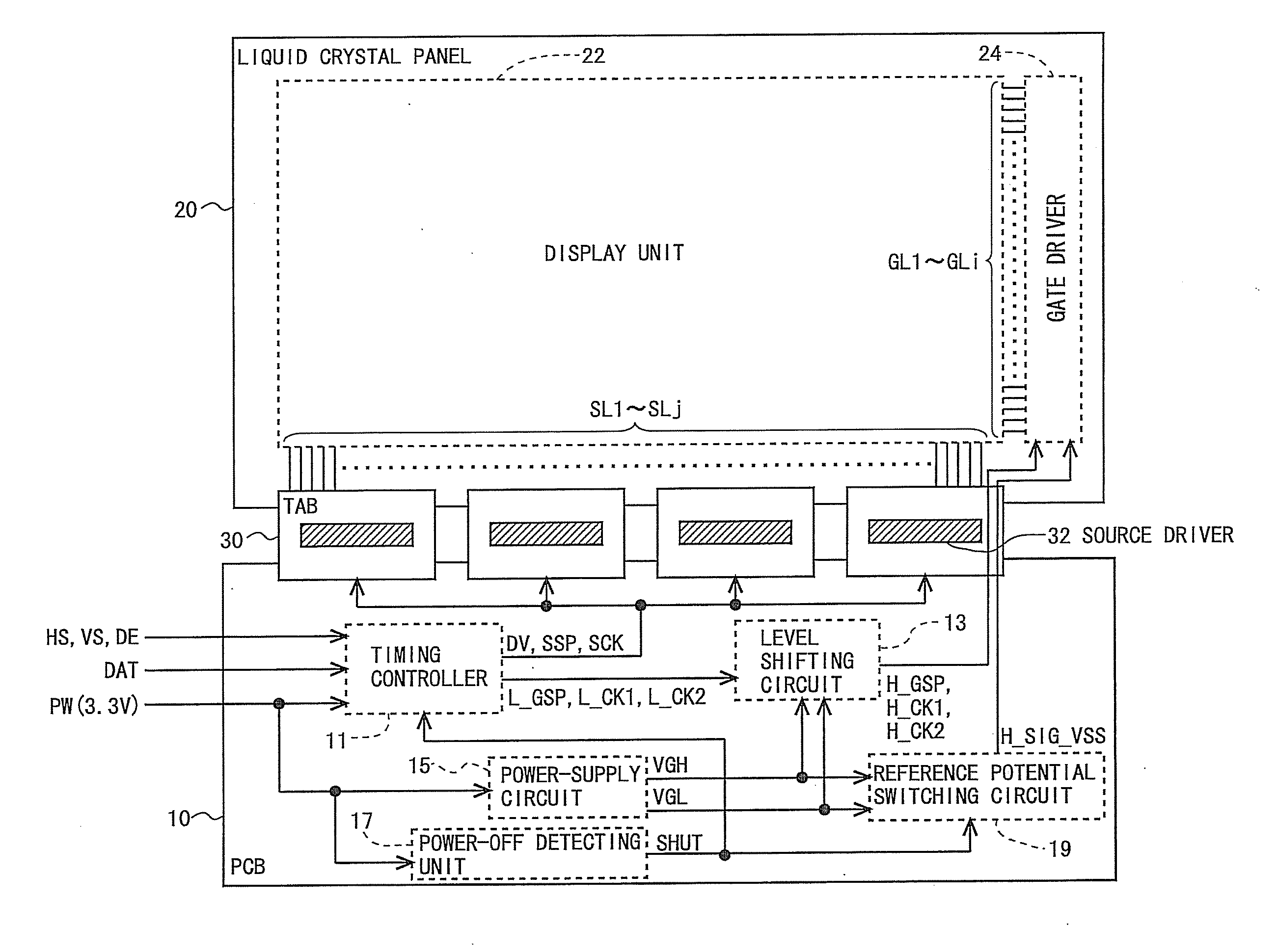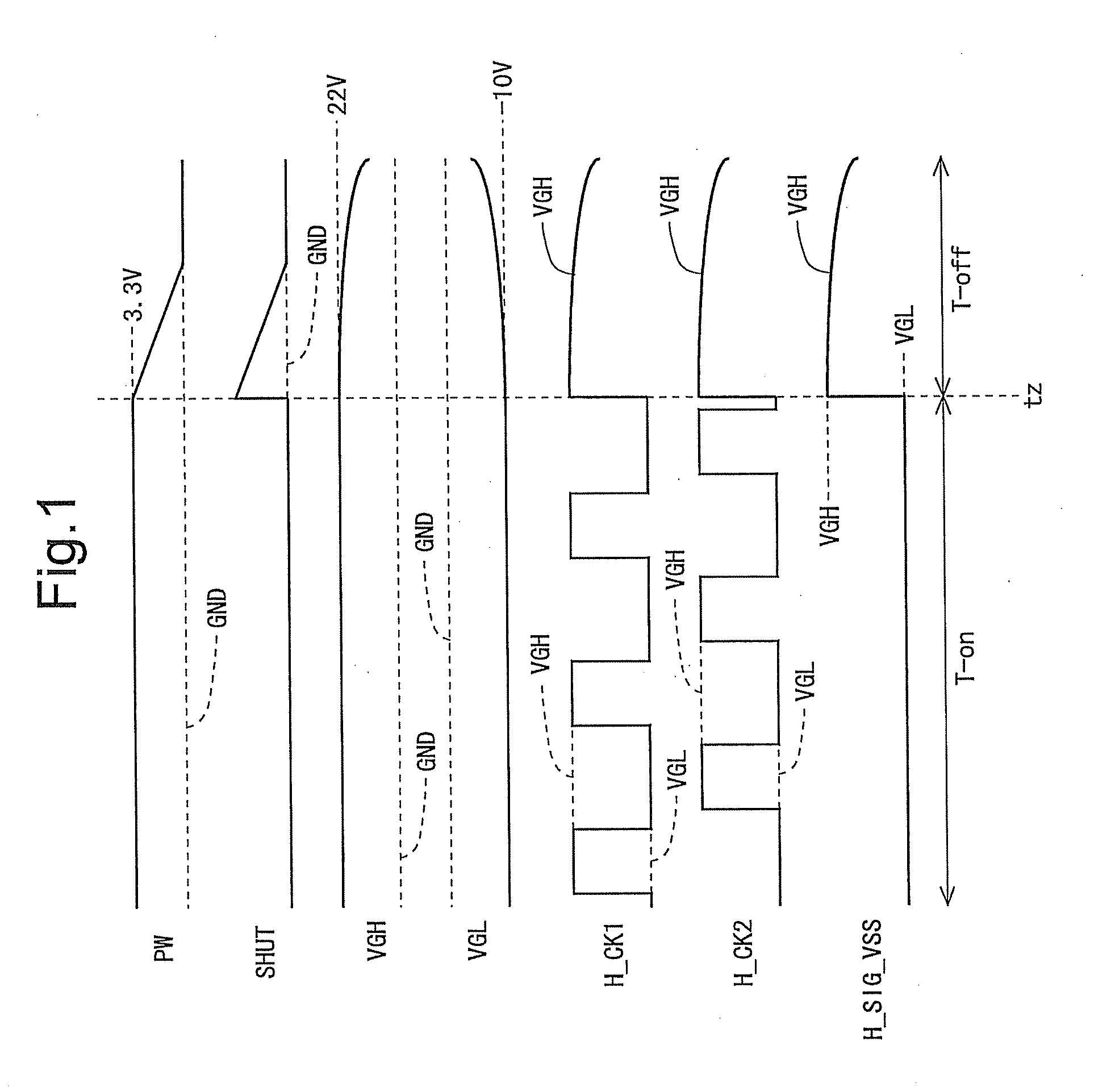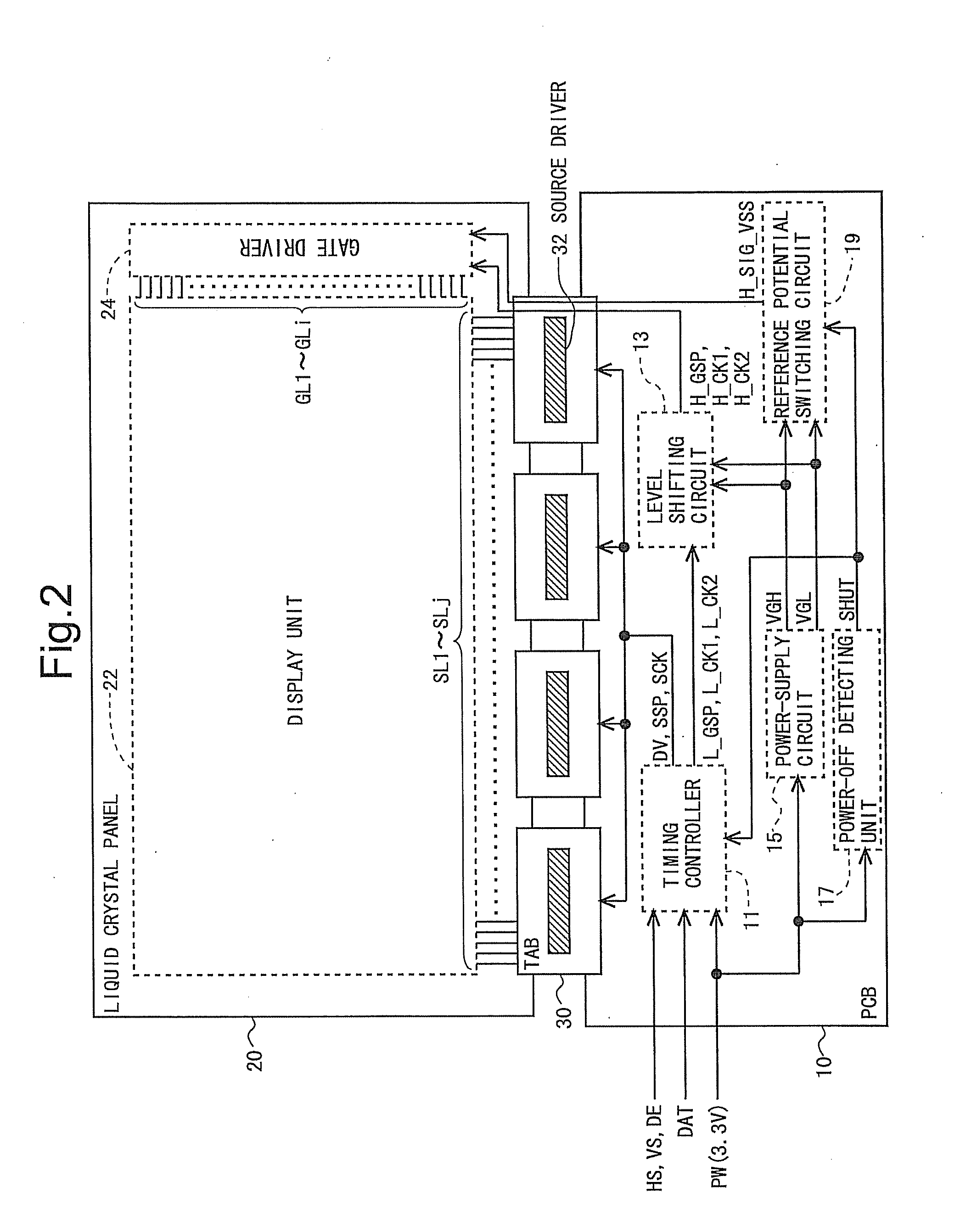Liquid crystal display device and method of driving the same
- Summary
- Abstract
- Description
- Claims
- Application Information
AI Technical Summary
Benefits of technology
Problems solved by technology
Method used
Image
Examples
first embodiment
1. First Embodiment
[0091]
[0092]FIG. 2 is a block diagram illustrating an overall configuration of an active matrix-type liquid crystal display device according to a first embodiment of the present invention. Referring to FIG. 2, this liquid crystal display device is configured by a liquid crystal panel 20, a PCB (printed circuit board) 10, and a TAB (Tape Automated Bonding) 30 connected to the liquid crystal panel 20 and to the PCB 10.
[0093]The liquid crystal panel 20 is provided with a display unit 22 for displaying an image. The display unit 22 includes a plurality (number j) of source bus lines (video signal lines) SL1 to SLj, a plurality (number i) of gate bus lines (scanning signal lines) GL1 to GLi, and a plurality (i×j) of pixel formation portions provided respectively corresponding to intersections between the source bus lines SL1 to SLj and the gate bus lines GL1 to GLi. FIG. 3 is a circuit diagram illustrating a configuration of the pixel formation portion. Referring to FI...
second embodiment
2. Second Embodiment
[0125]A second embodiment of the present invention will be now described. Here, only differences from the first embodiment will be described in detail, and the similarities with the first embodiment will be described only briefly.
[0126]
[0127]FIG. 10 is a block diagram illustrating an overall configuration of an active matrix-type liquid crystal display device according to the second embodiment of the present invention. The liquid crystal panel 20 and the TAB 30 are configured in the same manner as in the first embodiment. In the PCB 50, a timing controller 51, a level shifting circuit 53, a power-supply circuit 55, and a power-OFF detecting unit 57 are formed.
[0128]The power-supply circuit 55 generates the gate-ON potential VGH and the gate-OFF potential VGL based on the power-supply voltage PW. The gate-ON potential VGH and the gate-OFF potential VGL are supplied to the level shifting circuit 53. The power-OFF detecting unit 57 outputs the power-supply condition...
PUM
 Login to View More
Login to View More Abstract
Description
Claims
Application Information
 Login to View More
Login to View More - R&D
- Intellectual Property
- Life Sciences
- Materials
- Tech Scout
- Unparalleled Data Quality
- Higher Quality Content
- 60% Fewer Hallucinations
Browse by: Latest US Patents, China's latest patents, Technical Efficacy Thesaurus, Application Domain, Technology Topic, Popular Technical Reports.
© 2025 PatSnap. All rights reserved.Legal|Privacy policy|Modern Slavery Act Transparency Statement|Sitemap|About US| Contact US: help@patsnap.com



